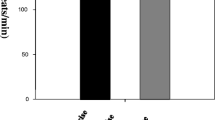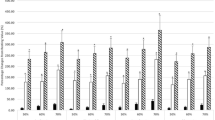Abstract
This study was designed to test the hypothesis that elevated plasma noradrenaline concentrations contribute to the exercise-induced modulation of the activity and percentage of the natural killer (NK) cells, and the leucocyte concentration. In a single blind, controlled, cross-over study, eight healthy men had noradrenaline infused for 1 h and achieved plasma noradrenaline concentrations comparable (20-fold increment) to those previously observed in cycle ergometer exercise (75% of maximal oxygen uptake for 1 h). The noradrenaline infusion increased the unstimulated, the interleukin-2 and interferon-α stimulated NK cell activity, and the percentage of CD16+ cells. The natural lytic activity per CD16+ cell however, did not change. The concentration of neutrophils, lymphocytes and CD16+ cells increased during the infusion. The neutrophil concentration remained elevated 2 h after infusion, at which time the lymphocyte count was back to normal. These results are comparable with the effects in the exercise model, and it is suggested that the augmented plasma noradrenaline concentrations, seen during extreme exercise, may participate in the exercise-induced immune changes.
Similar content being viewed by others
Author information
Authors and Affiliations
Additional information
Accepted: 22 June 1998
Rights and permissions
About this article
Cite this article
Kappel, M., Poulsen, T., Galbo, H. et al. Effects of elevated plasma noradrenaline concentration on the immune system in humans. Eur J Appl Physiol 79, 93–98 (1998). https://doi.org/10.1007/s004210050479
Issue Date:
DOI: https://doi.org/10.1007/s004210050479




